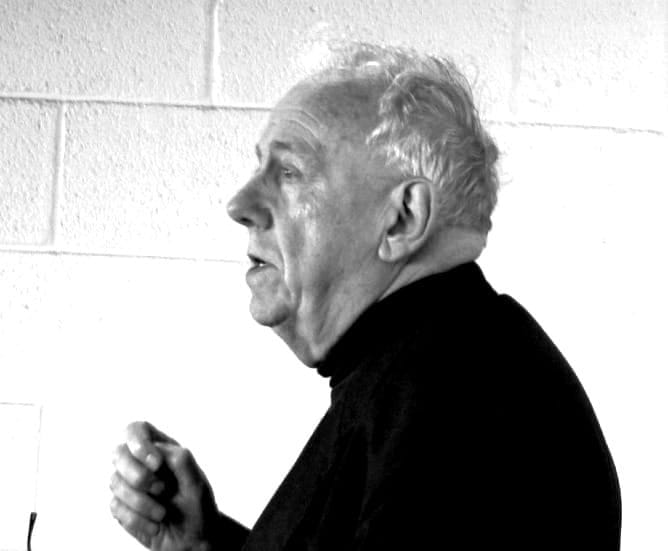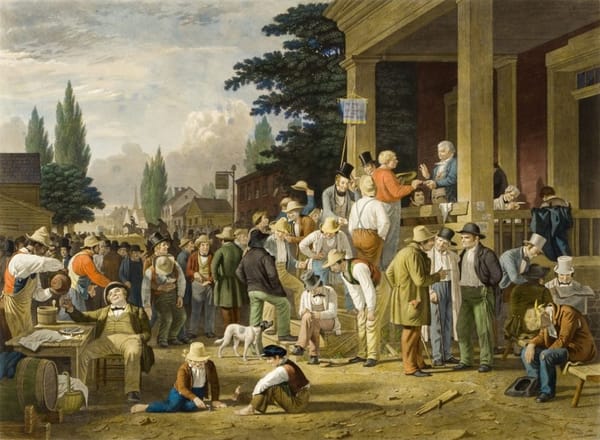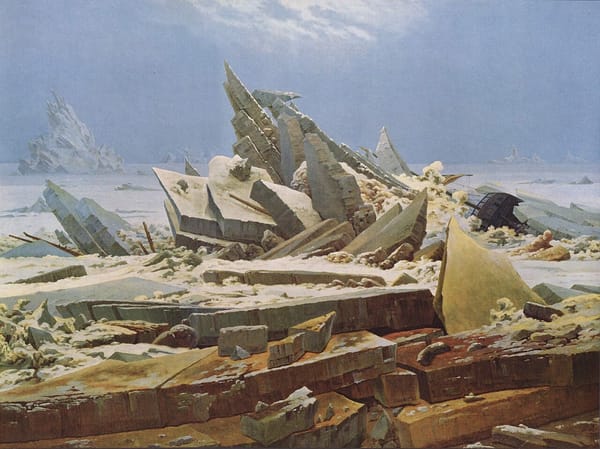The Transformation of Alasdair MacIntyre: From Marxist Scholar to Catholic Virtue Ethicist

How one of the 20th century’s most radical philosophers abandoned Marxist utopianism for Aristotelian tradition and Thomistic faith.
"I can only answer the question ‘What am I to do?’ if I can answer the prior question ‘Of what story or stories do I find myself a part?" Alasdair MacIntyre - After Virtue, 1981
Alasdair MacIntyre’s life illustrates the old adage that even the greatest minds can radically change course. Born in Glasgow in 1929, he died in 2025 as what one obituary called a “towering figure in moral philosophy and a Catholic convert.” He earned master’s degrees at Manchester and Oxford, taught at Manchester, Leeds, Essex and Oxford in Britain before moving to the United States, and today is best remembered for reviving Aristotelian virtue ethics—especially through his 1981 classic After Virtue. Yet his intellectual biography contains a surprising turn: in his youth, MacIntyre was a Marxist activist. Understanding his shift from Marxism to Catholic Thomism requires tracing both his personal journey and the turbulent intellectual currents of the 20th century.
Early Influences and Marxist Beginnings
MacIntyre’s upbringing was eclectic: a Gaelic-speaking, Presbyterian family of doctors, a move to London’s East End, and an early immersion in both Greek classics and modern philosophy. At Queen Mary College, University of London (1945–49), he read Plato and Aristotle alongside Kant, Mill, Marx, Sartre, Wittgenstein, and Popper. Postwar London’s hardships sharpened his sympathy with the working poor, and by 1948 he had joined the Communist Party of Great Britain.
His first book, Marxism: An Interpretation (1953), tried to ground socialism in an ethical framework of communal solidarity. Already he hinted at discomfort with Marx’s later determinism, but the book secured his reputation as a young Marxist philosopher.
Activism in the New Left
Through the 1950s and 1960s, MacIntyre was immersed in Britain’s New Left. While teaching at Manchester and later Leeds and Oxford, he contributed to radical journals, joining the editorial board of International Socialism. He moved in circles that included Eric Hobsbawm, Charles Taylor, and Christopher Hitchens.
MacIntyre’s writings of this period combined Marxist critique with a moral vocabulary shaped by Christianity. In Marxism and Christianity (1968), a heavily revised version of his earlier work, he admitted serious doubts about both traditions. Still, his animating insight was Marxist: capitalism alienated individuals, destroying community and moral cohesion.
Disillusionment and Departure from Marxism
By the late 1960s, MacIntyre was breaking with Marxism. He had left the Communist Party even before the 1956 Hungarian Uprising and abandoned Trotskyist groups by 1968. Watching Stalinism’s brutality and the student New Left’s rhetorical excesses, he concluded that both betrayed socialism’s promise.
In the United States after 1969, he criticized Herbert Marcuse and radical student movements as intellectually incoherent. His 1971 Against the Self-Images of the Age dismissed Marxism, liberalism, and Freudianism alike for failing to provide a coherent moral vision. MacIntyre, by then a self-described atheist, quipped that he was a “Roman Catholic atheist”—still drawn to Catholic intellectual resources while disbelieving in God.
Philosophical Breakthrough: Return to Tradition
The 1970s proved decisive. Influenced by Wittgenstein and Thomas Kuhn, MacIntyre came to see modern moral philosophy as fragmented—“the fragments of a conceptual scheme.” His 1977 essay “Epistemological Crises, Dramatic Narrative, and the Philosophy of Science” introduced the idea that human beings are “storytelling animals” embedded in traditions.
After Virtue (1981) sharpened the critique. He likened modern morality to the scattered pages of a destroyed textbook: concepts like “justice” and “rights” survived, but severed from coherent frameworks. The Enlightenment’s rationalism and Marxism’s historicism alike had failed. His remedy was a return to Aristotle: virtues understood within living traditions and communal practices. The book marked his definitive break from secular leftism and positioned him as a communitarian critic of modernity.
Embracing Thomistic Christianity
MacIntyre’s Aristotelian turn naturally led him back to religion. Inspired by Catholic thinkers like Joseph Ratzinger (later Benedict XVI), he discovered in Thomas Aquinas a synthesis of reason and faith, tradition and natural law. In 1983, at age 54, he formally entered the Roman Catholic Church.
From then on, his philosophical project was explicitly Thomistic. He attended daily Mass, even while personally constrained by a divorce, and integrated Aquinas into his vision of virtue ethics. Works such as Whose Justice? Which Rationality? (1988) and Three Rival Versions of Moral Enquiry (1990) deepened his exploration of how traditions provide rationality’s necessary home.
Historical Context and Intellectual Legacy
MacIntyre’s journey mirrors the broader intellectual history of the 20th century. Like many European intellectuals, he was shaped by fascism’s horrors, communism’s betrayals, and the exhaustion of secular utopias. His trajectory—from Marxist hope, through disillusionment, to Aristotelian-Thomistic renewal—traced the collapse of ideology and the rediscovery of tradition.
Robert George described him as “sui generis,” impossible to box into left or right. Even in Catholic Thomism, MacIntyre remained haunted by Marx’s critique of capitalism, sharing its suspicion of alienation and modernity’s fragmentation. But unlike Marxism, his final framework offered not revolution but community, tradition, and virtue.
By the end of his life, After Virtue had become a classic in ethics courses worldwide, and MacIntyre was celebrated as the most influential virtue ethicist of modern times. His transformation demonstrates how a restless search for coherence can lead from radical Marxism to Catholic Thomism.
Why MacIntyre Matters
Intellectual honesty: MacIntyre shows that great thinkers can change their minds when confronted with the failures of their own ideology.
Tradition vs. modernity: His work highlights the limits of Enlightenment rationalism and Marxist historicism in grounding morality.
Faith and philosophy: His Catholic conversion illustrates how religious traditions can provide intellectual resources for ethics.
A warning for today: His critique of fragmentation resonates in a time when politics, culture, and digital life are once again fractured.
A model of courage: MacIntyre’s story is not of betrayal but of fidelity—seeking truth wherever it leads, even at the cost of abandoning old creeds.
MacIntyre’s life reminds us of philosophy’s deepest task: to hold fast to the search for the good life in community. His transformation from Marxist critic to Catholic virtue ethicist is a parable of modern intellectual history—how, when ideologies collapse, tradition can re-emerge as the bearer of meaning.





